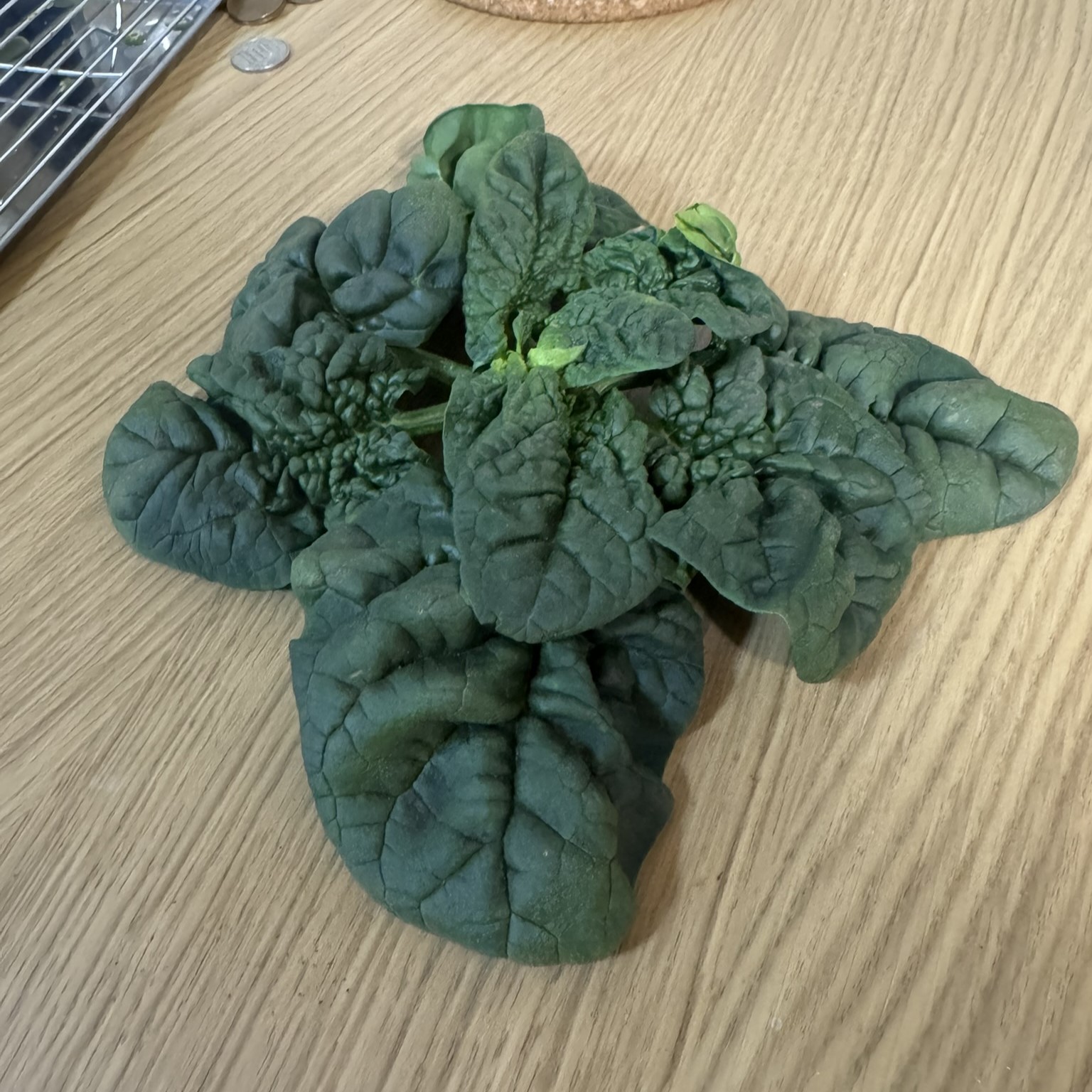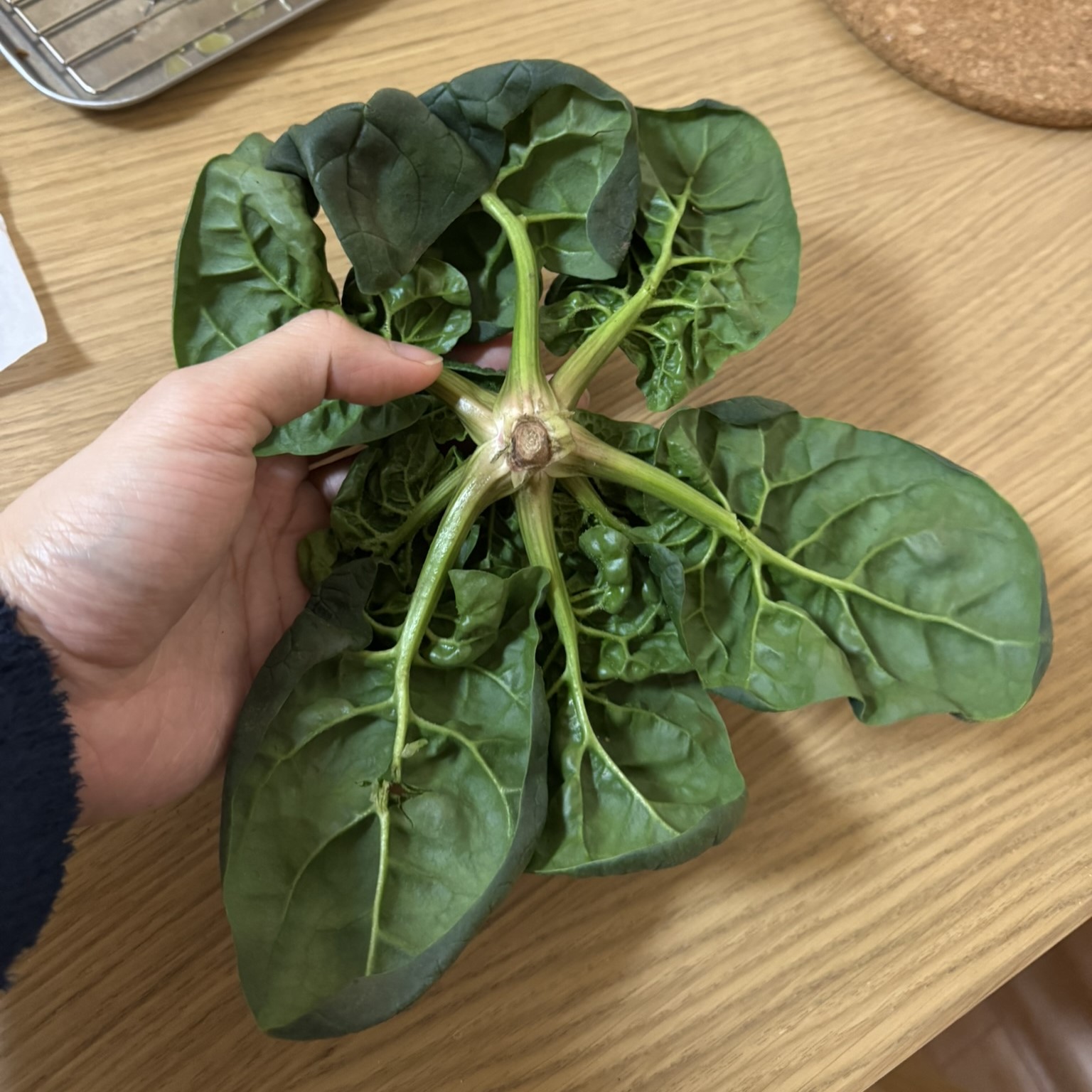A Strange Spinach


Last month, my wife brought home a very unusual spinach. It was shorter and wider than the typical spinach you find in Japan. The label read 寒じめちぢみほうれん草(kanjime chijimi hourensou), which roughly translates to cold-shrunk spinach. A quick Google search led me to an unexpected realization: the spinach I grew up eating as a kid wasn’t actually true spinach.
The Curious Case of Shrunk Spinach
Let’s start with this unique variety. It’s naturally shorter, which explains its compact shape, but what makes it special is how it’s grown. Cultivated in cold winter climates, it develops a higher sugar content, making it sweeter than regular spinach 1. However, I couldn’t find a clear explanation of whether the cold also contributes to its shrinkage.
And the taste? Sweeter, but also more bitter than typical spinach. The texture was crispier, which I really enjoyed.
My Spinach Revelation
Now, onto my realization. The “spinach” I ate as a kid in Indonesia wasn’t actually spinacia oleracea, the species commonly known as spinach in Japan and many other parts of the world. Instead, bayam (what we call spinach in Indonesia) belongs to the Amaranthus family (e.g., Amaranthus dubius) 2.

I had never really thought about it before. I did notice that Japanese spinach had much larger leaves than what I grew up with, but I assumed it was just a difference in quality. It turns out, they’re entirely different plants!
Taste-wise, from what I remember, Amaranthus spinach and Spinacia spinach aren’t all that different.
Well, you learn something new every day.
References
-
コープさっぽろの広報誌 Cho-co-tto(ちょこっと), “冬限定の『ちぢみほうれん草』、普通のほうれん草と何が違うの?,” Note, Jan. 5, 2021. [Online]. Available: https://note.com/chocotto_coop/n/n771255dba316 [Accessed: Feb. 15, 2025]. ↩
-
“Amaranth,” Wikipedia, n.d. [Online]. Available: https://en.wikipedia.org/wiki/Amaranth. [Accessed: Feb. 15, 2025]. ↩
Related posts: